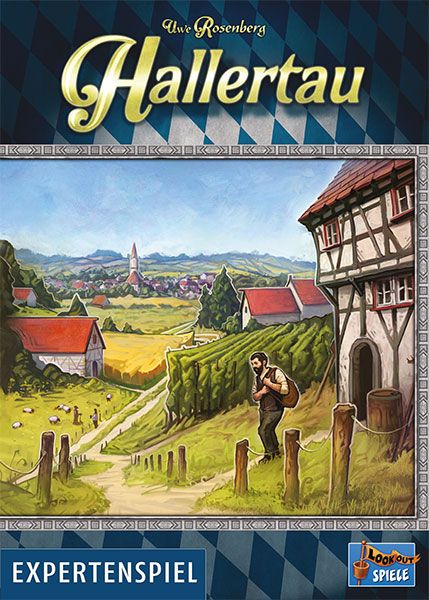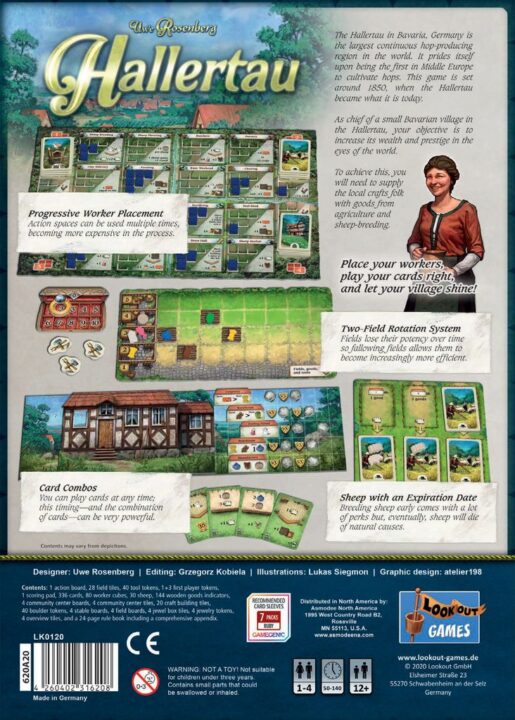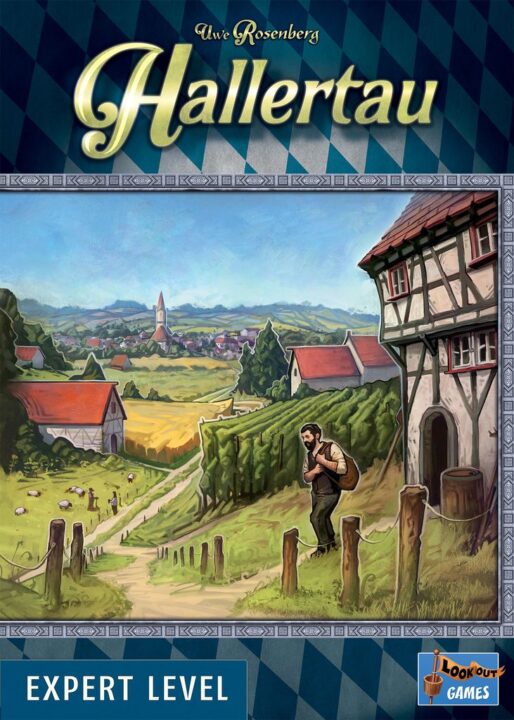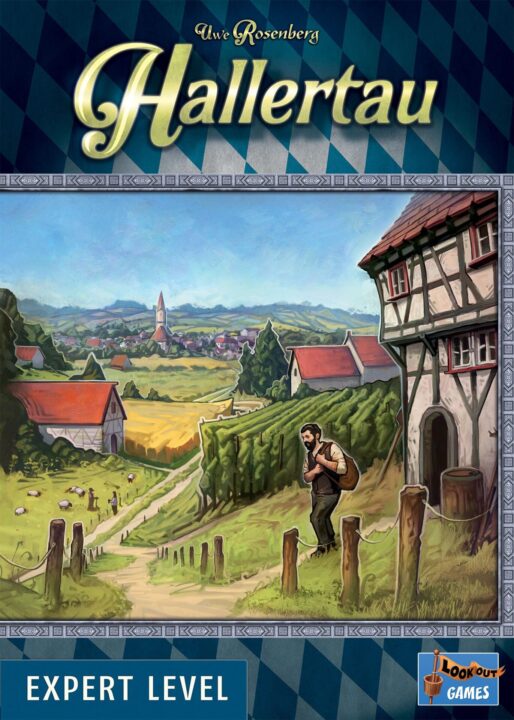Overview:
Welcome to our review of the game Hallertau! In this review, we will dive into the gameplay mechanics, art and components, and the replayability of this popular board game. Hallertau is a strategic farming game that challenges players to manage their resources, cultivate crops, and make challenging decisions to build the most successful farm. So let’s jump right in and explore what makes Hallertau an exciting and engaging board game!
Gameplay Mechanics:
One of the standout features of Hallertau is its intricate gameplay mechanics. The game offers a unique blend of worker placement, resource management, and tactical decision-making. Players must carefully allocate their workers, plan their actions in advance, and make strategic choices to optimize their farm’s development. The game provides a satisfying balance of complex strategies and accessible gameplay, making it engaging for both casual and experienced players.
Elegant Worker Placement System:
The worker placement system in Hallertau is intuitive and well-designed, allowing players to place their workers on different action spaces to carry out specific tasks. The availability of actions changes each round, creating a dynamic and ever-shifting landscape. This adds an exciting element of adaptability and strategic thinking to the game.
Resource Management:
Managing resources is a crucial aspect of Hallertau. Players must gather and allocate resources effectively to expand their farm, upgrade buildings, and complete valuable orders. Balancing resource acquisition, storage, and utilization is key to success and adds a satisfying layer of depth to the gameplay.
Tactical Decision-Making:
Every decision matters in Hallertau. From choosing which crops to grow, where to allocate workers, and which buildings to construct, players must carefully consider their options and anticipate the consequences of their choices. This strategic element keeps players engaged and invested in the outcome of the game.
After exploring the engaging gameplay mechanics in Hallertau, let’s now turn our attention to the art and components of the game.
How It Plays
Setting up:
To set up Hallertau, each player is given a player board, a set of worker tokens, and starting resources. The central game board is placed in the center of the table, and the various cards and tokens are organized and shuffled according to the rulebook. Each player then places their workers and starting buildings on their player board.
Gameplay:
The gameplay of Hallertau is divided into several rounds, with each round consisting of the following phases:
- Season Phase: Players reveal a new season card and resolve its effects.
- Worker Placement Phase: Players take turns placing their workers on action spaces, carrying out various actions such as growing crops, breeding animals, or constructing buildings.
- Field Phase: Players harvest crops and gain resources.
- Maintenance Phase: Players must fulfill the needs of their farm, such as feeding their animals or paying maintenance costs for buildings.
The gameplay continues in this fashion until a predetermined number of rounds have been completed.
Winning the game:
In Hallertau, the game ends after a set number of rounds, typically determined by the number of players. The player with the most victory points at the end of the game is declared the winner. Victory points can be gained through various means, such as fulfilling orders, constructing buildings, and expanding the farm.
Now that we have covered the gameplay mechanics and how to play Hallertau, let’s move on to discuss the replayability of this fascinating board game.
Want to know more? Read our extensive strategy guide for Hallertau.
Hallertau: A Case Study in Engaging Gameplay Mechanics
Simple yet Strategic Gameplay
The gameplay mechanics of Hallertau strike a perfect balance between simplicity and depth, making it accessible to both casual players and seasoned board gamers alike. The main focus revolves around managing resources to maximize efficiency and expand your farming empire in the titular Bavarian region.
Strategic Decision-making
Every turn in Hallertau presents a series of strategic decisions that will shape the course of the game. From deciding which crops to plant, to managing workers and upgrading buildings, each choice impacts your ability to generate income, acquire new technologies, and ultimately outperform your opponents. It’s a delicate balancing act that keeps players on their toes throughout the entire game.
Diverse Actions and Special Abilities
With a wide range of actions to choose from, such as planting fields, harvesting crops, and brewing beer, Hallertau offers a plethora of options for players to pursue their desired strategy. Additionally, each player possesses a unique special ability that adds another layer of depth and variety to the gameplay, encouraging thoughtful planning and fostering different play styles.
Predictable Card Drafting
While the card drafting mechanic in Hallertau may initially seem random, it offers a clever twist by granting players a peek at the next card in the deck before making their choice. This provides a sense of control and allows for strategizing around future card draws, adding an interesting strategic dimension to the gameplay.
With its engaging gameplay mechanics, Hallertau sets the stage perfectly for the next crucial aspect of any board game: its art and components.

The Enduring Charm: Art and Components
The visual appeal of a board game can often be the deciding factor for players, and in the case of Hallertau, it does not disappoint. From the moment you open the box, you are greeted with stunning artwork that truly captures the essence of rural Bavaria. The illustrations on the cards and player boards are vibrant and immersive, creating an engaging atmosphere that adds to the overall experience of the game. Furthermore, the quality of the game components is top-notch. The wooden meeples are beautifully crafted and satisfying to handle, while the thick cardboard tokens and tiles are durable and durable. The attention to detail shines through in every aspect of the game, from the custom-shaped meeples to the intricate illustrations on the game board.
Immersive Artwork
The artwork in Hallertau is not just aesthetically pleasing; it also serves a practical purpose. The visual design aids in quickly identifying different elements of the game and enhances the overall gameplay. The clear iconography and vibrant colors make it easy to distinguish between different types of resources and actions, keeping the game flow smooth and intuitive.
Premium Components
The quality of the components in Hallertau is exceptional, providing a tactile satisfaction to players. The wooden meeples are chunky and well-crafted, lending a pleasant weight to the game. This attention to detail extends to the thick cardboard tokens and tiles, which are sturdy and resistant to wear and tear.
An Artistic Delight
Hallertau’s art and components combine to create an immersive and visually satisfying experience. The attention to detail in the artwork, coupled with the durability and quality of the components, make for a game that not only plays well but also looks beautiful on the table.
With the art and components covered, let’s explore the next aspect that sets Hallertau apart: its replayability.

Hallertau is a captivating game with a wide variety of gameplay mechanics that keep players engaged from start to finish.
Engaging Gameplay
Diverse Actions
The game offers a diverse range of actions that players can take each turn. From planting and harvesting crops to breeding animals and trading goods, there are plenty of strategic decisions to make. This variety ensures that no two games feel the same and keeps the gameplay fresh and exciting.
Resource Management
Proper resource management is crucial in Hallertau. Players must carefully allocate their workers and make strategic choices about when to invest in new buildings or upgrade existing ones. Balancing these decisions adds a layer of depth and complexity to the gameplay.
Dynamic Card System
The game also features a dynamic card system that introduces new elements and objectives throughout the course of play. Each card provides unique benefits and can alter the game’s strategies and priorities. This unpredictability adds excitement and replayability to every session.
The game also features stunning artwork and high-quality components. The beautifully illustrated cards and game board immerse players in the pastoral landscape of Hallertau. The wooden tokens and player pieces are solid and durable, giving the game a tactile and satisfying feel.
In conclusion, Hallertau offers engaging gameplay with diverse mechanics, stunning artwork, and high-quality components. Whether you’re a fan of resource management games or looking for a new strategic challenge, Hallertau is definitely worth a try.

Conclusion
In conclusion, Hallertau is a standout board game that offers an engaging and strategic gameplay experience. With its elegant worker placement system, resource management mechanics, and tactical decision-making opportunities, the game keeps players immersed and invested in the outcome. The high-quality art and components further enhance the overall experience, adding visual appeal and immersion to the gameplay. Additionally, the game’s replayability is commendable, with various strategies to explore and multiple paths to victory. Whether you’re a seasoned gamer or new to the world of board games, Hallertau is definitely worth adding to your collection. With its depth, immersive gameplay, and compelling mechanics, you won’t be disappointed. This concludes our review of Hallertau.


